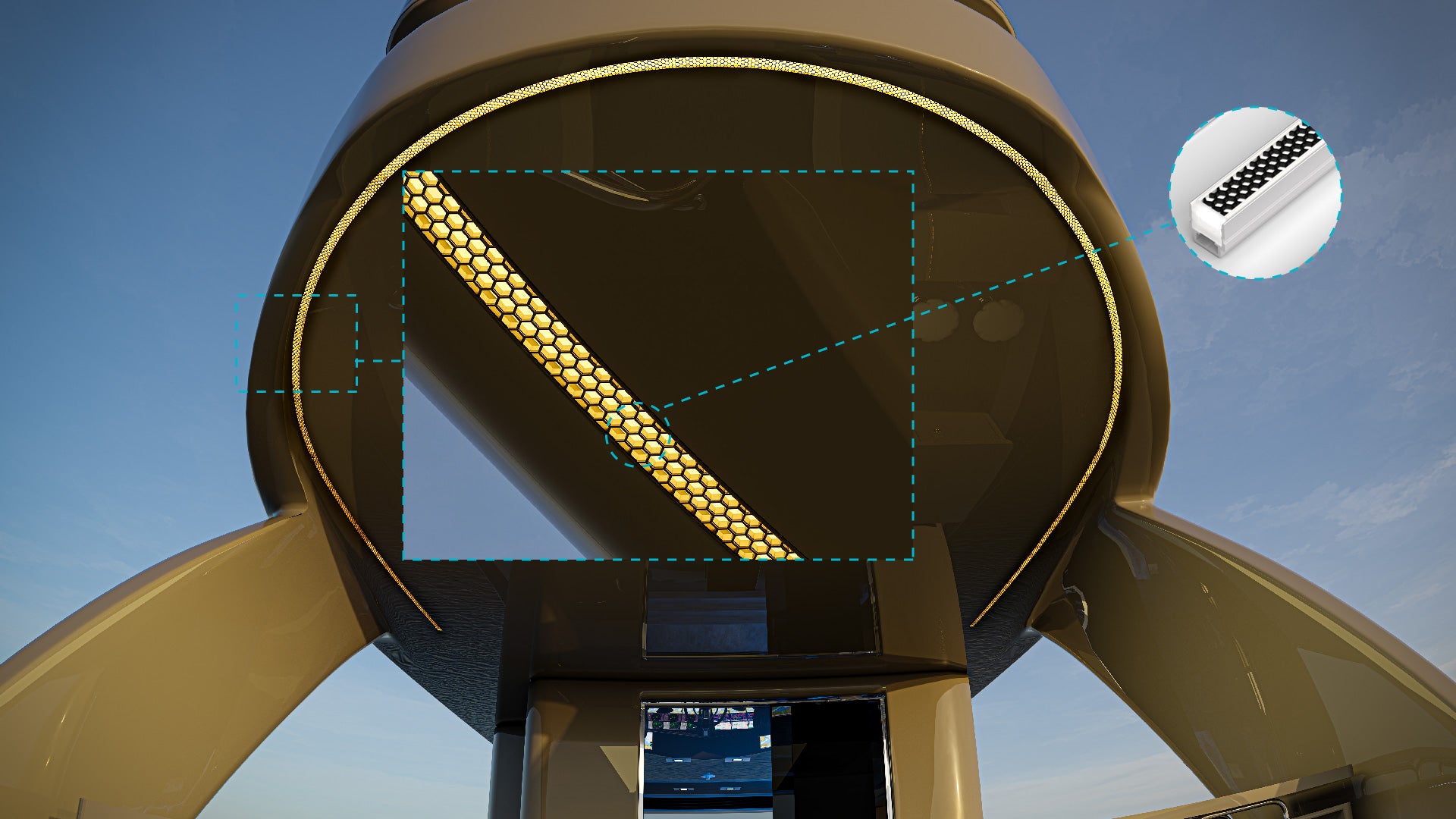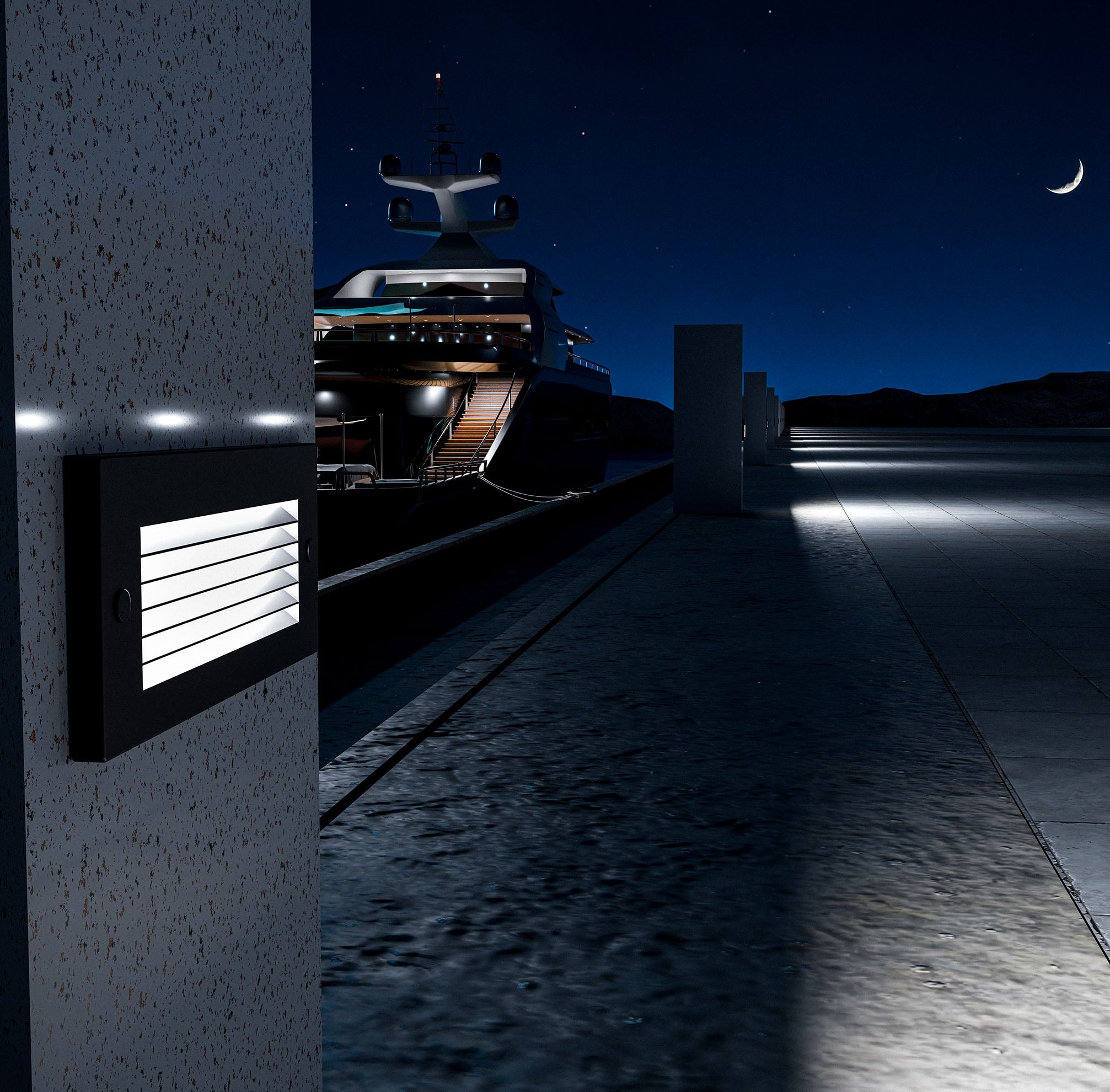As fall sets in and daylight hours grow shorter, many boaters find themselves navigating the water after dark. While nighttime boating can be a serene and beautiful experience, it comes with its own set of challenges—most notably, ensuring proper visibility while minimizing the impact on the environment. One of the most significant environmental concerns related to nighttime boating is light pollution. Excessive or poorly directed artificial lighting disrupts the natural environment, particularly in marine ecosystems.
Marine LED lighting offers an ideal solution for boaters looking to maintain safety and visibility while reducing their impact on the environment. In this blog, we’ll explore the effects of light pollution, how marine LED lighting reduces it, and why LED lighting is the perfect choice for eco-conscious boaters during the fall season.
Understanding Light Pollution and Its Effects on Marine Environments
What Is Light Pollution?
Light pollution refers to the excessive, misdirected, or invasive use of artificial light, especially in outdoor environments. In marine settings, this can include lights from boats, docks, coastal developments, and marinas. The most common types of light pollution include skyglow, which brightens the night sky and reduces visibility of stars, and glare, which can hinder visibility and cause discomfort.
Impact on Marine Wildlife
Artificial light has far-reaching consequences on marine ecosystems. Many marine species rely on natural light cycles to regulate their behavior. For example, some species of fish, sea turtles, and plankton depend on darkness for reproduction, feeding, and navigation. Bright, misdirected artificial lighting disrupts these processes, leading to behavioral changes, disorientation, and in some cases, population decline. For instance, young sea turtles are known to become disoriented by artificial lights, often leading them away from the safety of the ocean.
Environmental and Human Consequences
Beyond the impact on wildlife, light pollution also affects the natural beauty of marine environments. Bright artificial lights diminish the beauty of the night sky, making it harder to appreciate stars and natural celestial events. This loss of night sky visibility detracts from the experience of night boating. In addition, excessive light pollution can impact human health, interfering with circadian rhythms and sleep patterns. As boaters, being mindful of our light use can significantly reduce the overall impact on both the environment and the nighttime experience.
The Role of LED Lighting in Reducing Light Pollution
Directional Lighting
One of the primary ways marine LED lighting reduces light pollution is through directional lighting. Unlike traditional halogen or incandescent bulbs, which tend to scatter light in all directions, LEDs can be precisely focused to illuminate specific areas. This helps minimize light spill, ensuring that the light is concentrated only where it’s needed—on the deck, walkways, or around the hull. This reduces unnecessary illumination of the water and sky, thus reducing the contribution to light pollution. K2 Lighting’s marine LED products are designed with this in mind, offering highly focused beams that improve visibility without over-illuminating the surroundings.
Precision Control
Modern LED lighting systems often come with advanced controls that allow boaters to adjust the brightness and direction of their lights. For example, you can dim LED lights during low-activity periods or adjust the beam angle to illuminate specific tasks like docking or anchoring. This flexibility allows boaters to tailor the lighting to the task at hand, preventing the excessive use of high-intensity lights when they aren’t necessary. By controlling the intensity and direction, boaters can significantly reduce their light output while maintaining safety.
Energy Efficiency and Lower Brightness
LEDs are highly energy-efficient, meaning they produce more light with less power compared to traditional lighting. Because of this efficiency, marine LED lights can operate at lower brightness settings without sacrificing visibility. This reduced brightness directly translates to less environmental light pollution, as less light is emitted into the atmosphere. Even at lower intensities, LED lights offer excellent clarity, allowing boaters to navigate safely without overpowering the natural environment with excess light.
Benefits of Using Marine LED Lighting for Night Boating
Improved Night Vision
One of the key benefits of using marine LED lighting is the improved night vision it offers. Traditional lights, especially those that are too bright or poorly directed, can create glare, making it harder for the human eye to adjust to natural darkness. LED lighting, especially when dimmed or properly directed, helps reduce glare, allowing boaters to maintain their natural night vision. This makes it easier to spot hazards, other vessels, or natural markers such as rocks or buoys while minimizing disturbance to marine life.
Reducing Skyglow
Skyglow is one of the most noticeable effects of light pollution in coastal areas. It’s caused by the scattering of artificial light in the atmosphere, brightening the night sky and reducing visibility of stars and other celestial objects. Marine LED lighting, with its directional focus and reduced upward emission, significantly cuts down on skyglow. This allows boaters to enjoy clearer night skies while contributing to a reduction in overall light pollution along coastlines and marinas.
Customizable Color Temperatures
Many marine LED lighting systems offer customizable color temperatures. Warmer light tones, such as those around 2700-3000K, are less disruptive to wildlife and create a more natural, pleasant ambiance. Cooler, bright white lights (4000-5000K), while useful for tasks like navigation, can contribute more to light pollution. By choosing LEDs with adjustable color temperatures, boaters can use warmer tones when they are not performing critical tasks, further reducing light pollution while maintaining functionality.
LED Lighting Solutions for Eco-Friendly Fall Boating
Navigation and Task Lights
When boating at night, navigation and task lights are essential for both safety and compliance with maritime regulations. Marine LED navigation lights are not only brighter but also more efficient, allowing you to meet legal visibility requirements without contributing to excessive light pollution. Task lights, such as those used for docking, anchoring, or nighttime maintenance, should be focused and dimmable to avoid lighting up more of the surrounding area than necessary.
Underwater LED Lights
Underwater LED lighting offers both aesthetic and practical benefits for boaters. While it illuminates the area around the boat, it does so below the waterline, minimizing the impact on the surrounding airspace. This makes underwater LED lights an excellent option for reducing surface light pollution while enhancing visibility around the hull. These lights are particularly useful during fall night docking or when mooring in areas with low ambient lighting.
Deck and Ambient Lighting
Dimmable LED deck lights provide the perfect solution for creating a safe, comfortable environment on board without excessive brightness. During fall night boating, when visibility is crucial but conditions don’t require intense lighting, dimming your LED deck lights ensures that you have the right amount of light for comfort and safety without over-lighting the area. Additionally, soft ambient lighting can be used to enhance the onboard experience while reducing light pollution from your boat.
Why Reducing Light Pollution Matters for Fall Boating
Protecting Marine Ecosystems
As marine ecosystems become more stressed by human activity, reducing light pollution is a crucial step in protecting wildlife. Many species of marine life rely on natural light cycles to govern their feeding, breeding, and migration patterns. By minimizing artificial lighting, especially during critical fall months when marine animals are preparing for winter, boaters can help reduce disruptions to these natural behaviors. Using LED lights that direct light only where it’s needed ensures that wildlife is less disturbed by human presence on the water.
Enhancing Boating Experiences
Reducing light pollution also enhances the overall night boating experience. Clearer skies free from artificial light allow for better stargazing, which is often one of the greatest joys of night boating. By minimizing glare and skyglow, boaters can immerse themselves in the natural beauty of the night without compromising their safety. Additionally, a more subdued lighting environment fosters a sense of tranquility, which can be especially appealing during fall’s quieter boating season.
Aligning with Sustainability Goals
Sustainability is becoming an increasingly important consideration for boaters and the marine industry as a whole. By choosing marine LED lighting, boaters can align their practices with broader environmental and sustainability goals. LEDs are energy-efficient, long-lasting, and less harmful to the environment, making them an ideal choice for eco-conscious boaters. Reducing light pollution is a tangible way to lower your environmental footprint, contributing to the preservation of marine ecosystems while still enjoying the water.
As fall brings earlier sunsets and more frequent night boating, marine LED lighting proves to be the ideal solution for boaters seeking to reduce light pollution. By offering precision control, energy efficiency, and focused illumination, marine LED lights ensure safety and visibility while minimizing their impact on the environment. Whether you’re navigating the coast, docking after dark, or simply enjoying a peaceful evening on the water, LED lights from K2 Lighting can help you reduce your ecological footprint while enhancing your boating experience.
Explore K2 Lighting’s range of marine LED lighting solutions today and take the first step towards eco-friendly fall night boating.





